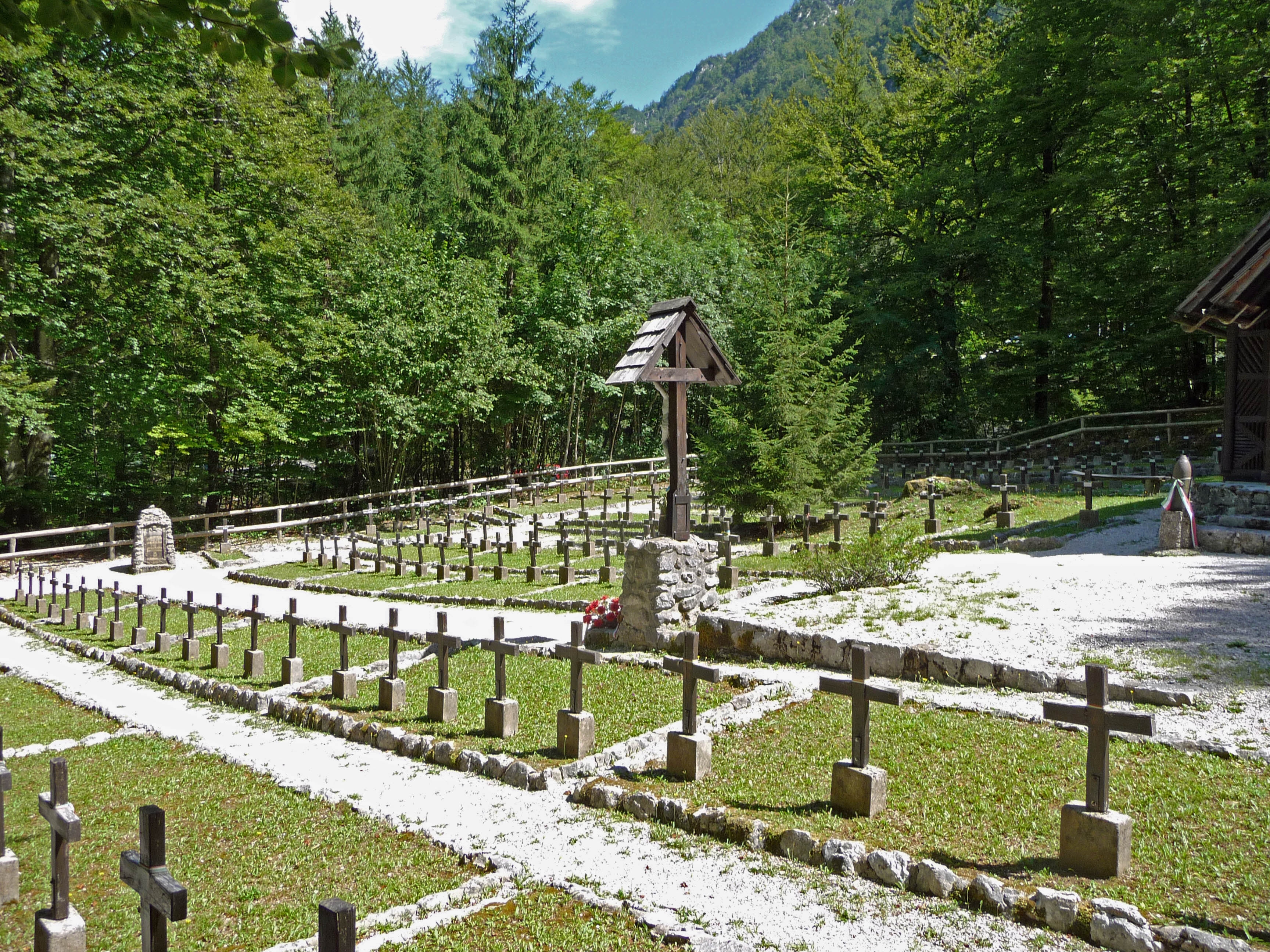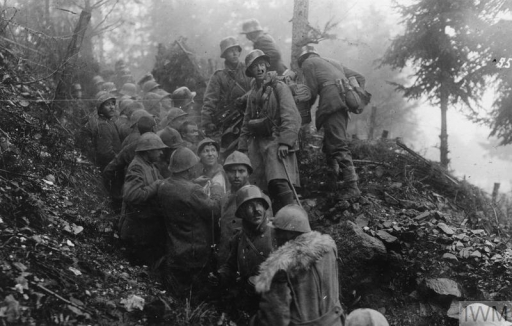The Central Powers launched an offensive against Italy on 24 October 1917, achieving a significant breakthrough after more than two years of fighting on the Isonzo river.
German troops joined Austria-Hungary for the attack, exploiting weaknesses in the Italian positions to outflank them in a battle that was to be named after Caporetto, a town in the Isonzo valley (present-day Kobarid in Slovenia).
Within two weeks, the Italian army was forced back some 130 kilometres (80 miles) towards the heartlands of the Veneto region.
But the Central Powers’ spectacular advance lost momentum because of lengthening supply lines, and it was finally checked at another river, the Piave, in early November.
Hundreds of thousands of Italian soldiers were either taken prisoner or deserted. More than two million civilians found themselves under occupation. As well as military defeat, the Italian authorities had to cope with a refugee crisis.
 The mountainous borderlands of the Isonzo had been the scene of repeated battles since June 1915. This Austro-Hungarian cemetery, at Bohinj in Slovenia, lay behind the lines (Photo © Hugh Pearman)
The mountainous borderlands of the Isonzo had been the scene of repeated battles since June 1915. This Austro-Hungarian cemetery, at Bohinj in Slovenia, lay behind the lines (Photo © Hugh Pearman)
The disaster cost General Luigi Cadorna his job as Italian army chief. Cardorna, who had a reputation for harsh discipline, was replaced by General Armando Diaz.
Erwin Rommel, the future Second World War commander, was among young German officers who learned from his experiences at Caporetto.
Ernest Hemingway, a volunteer ambulance driver, set his novel, A Farewell to Arms, against the background of the Italian campaign.
Fearing an Italian collapse, Britain and France sent troops to buttress the country’s war effort.
A conference of Allied leaders – held in the riviera town of Rapallo in November 1917 – also agreed to set up a permanent Supreme War Council, including the United States, to improve coordination.
In June 1918, the forces of Austria-Hungary attempted another attack on the Piave. Four months later, the Habsburg empire suffered defeat and its final collapse at the Battle of Vittorio Veneto.
Also in Centenary News:
WW1 Italian photos discovered in Australia.
Images courtesy of Imperial War Museums, © IWM Q 86143 (archive); Hugh Pearman (Bohinj cemetery)
Sources: Wikipedia/various
Posted by: CN Editorial team
